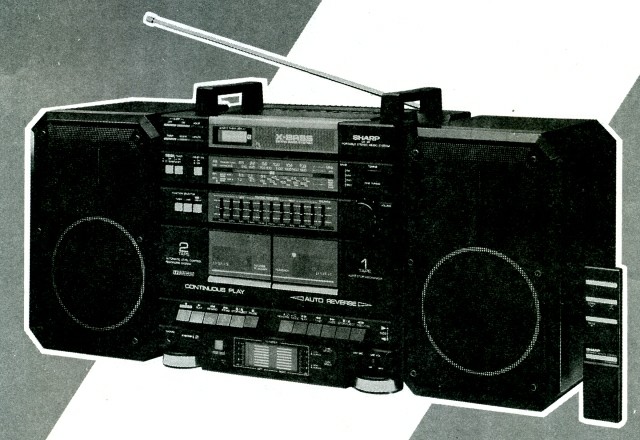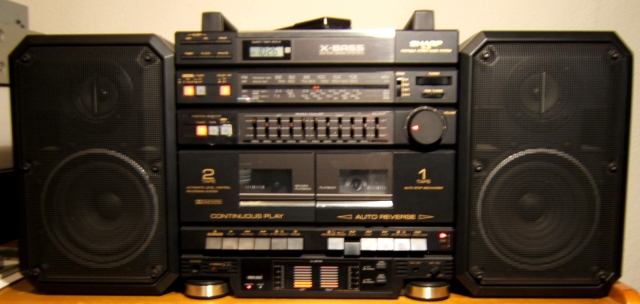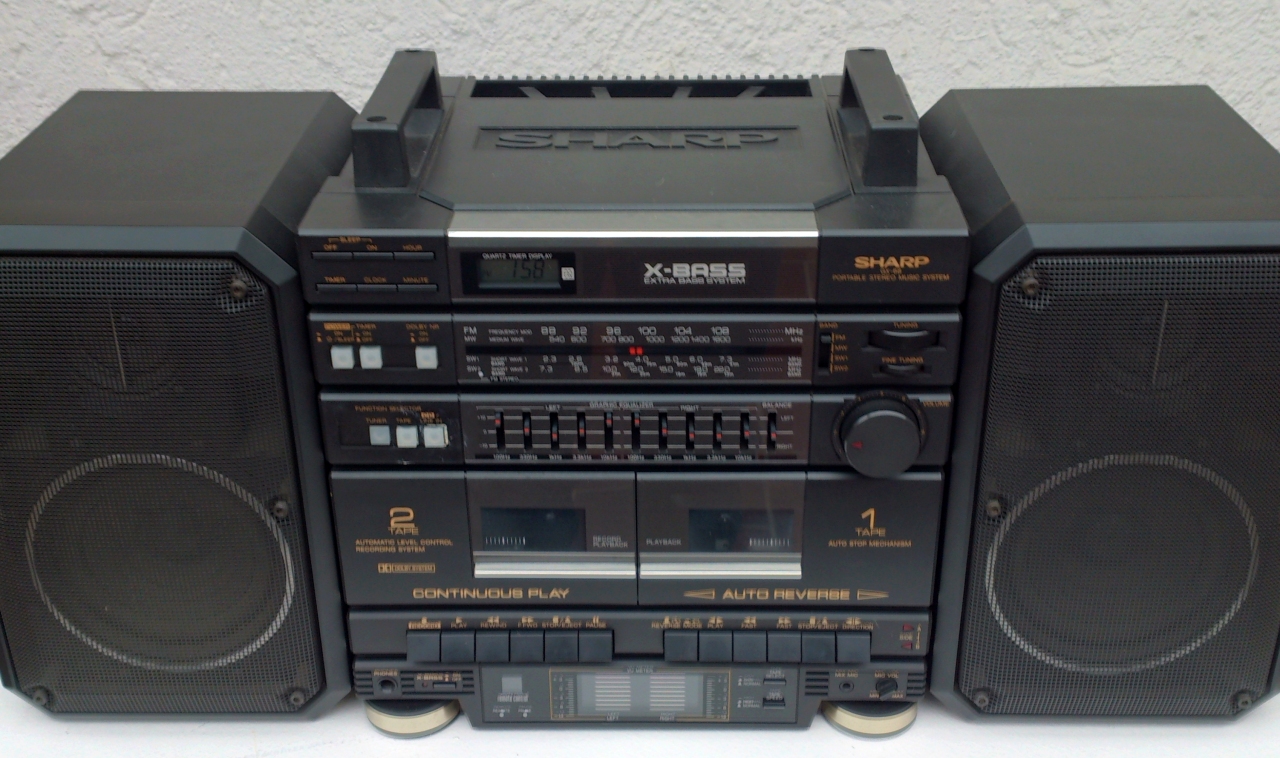Sharp GX-68ZIf one were to ask any young person today what their essential must-have gadget would be, the likely response would be "a smartphone". And the response isn't quite as thoughtless as it might initially seem because a modern smartphone today, in 2013, is practically a combination of all devices any typical young person would require for survival in the sub/urban jungle: a phone, a camera, an internet-connected messenger/computer, a games console, and -- most relevant to this page -- a music player. Back when I was the kid getting chased off a neighbour's lawn, the aforementioned were the exact same gadgets that my peers and I craved. Sure, the ones we were eyeing out in (brick-and-mortar) stores and (paper) magazines were bigger; they had to be plugged into the AC mains and were only available as separate devices by disparate manufacturers -- but they certainly were the same in basic function. Cellular phones and GPS might've been the stuff of science fiction but having a music system was a crucial necessity. As a kid you just had to have one, and it was within earshot. Having tolerated my share of shoddy radios, portable stereos and Walkman knock-offs as a teenager, I was 20 by the time I managed to finally afford a reasonable sound system. On 22-12-1989 a colleague and I marched into the Makro Crown Mines store and, after much deliberation and the necessary testing, laid down R2168.47 for this Sharp GX-68Z Portable Stereo Music System. 
Product advert | Operation Manual (English) | Large views: Box | Unit: Front | Rear Portability was the least of my concerns; what it had to do was sound good, and sound good it did indeed through its heavy and solid wooden speaker boxes. As a matter of fact, Sharp was a little off the mark in marketing this as a "portable" system: although there were carrying handles, it was rather hefty at over 10kg. Nor could it be powered by batteries -- unless that battery happened to be the one in your car: it had a 15V.DC jack. But being a typical youngster from the 80's (read: music nut), it was the double cassette deck that was the main feature. And it played loud. 
Another major deciding factor was that it had a line input and selector switch for an external CD player -- a device it got paired with a year later. The compilation/mixtape creation hobby was given a major boost. All was well with the world. 
Unfortunately, after a few years those same electromechanical input selector switches started wearing out -- a situation that was remedied by the application of Prestik putty (note the white residue around the CD/line-in button in the photo above). I'm quite sure that when this GX-68Z unit came out, Sharp had pitted it as a direct competitor to Sony's popular FH-series of boomboxes. It was quite ironic then that when we emigrated to Germany in 2001 it had already been replaced by a more modern and superior one from Sony that included a CD-player and a proper remote control. Although the Sharp unit spent most of its final years packed away in its box, it did experience a small renaissance of usefulness when I had several audiobooks to listen to during 2011/2012. Speaking of the remote control: In the eighties it became fashionably redneck to cover remote control units with cling wrap to avoid smudges and spills. I did that too. 
In March 2013, when I took these final nostalgic notes and photos of the unit before throwing it out, I also removed the cling wrap around the remote control to reveal the still functional, original Japanese batteries that I had inserted 23 years before. 
Respect, and goodbye. This page last updated: 31-12-2016
|